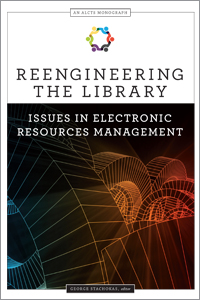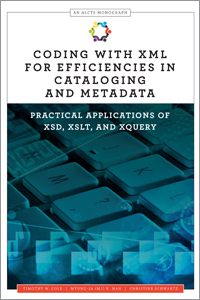Description
This book offers financial management principles and best practices for libraries in the areas of accounting, budgeting, stakeholder participation, operating ratios, fiscal benchmarking, metrics, and annual statements.
Table of Contents
1 Introduction to Budgeting and Strategic PlanningLearning Objectives
What Is a Budget?
Budgeting and the Library’s Strategic Planning Process
Types of Budgets That May Be Used in Libraries
Budgetary Approaches
Budgetary Tools
Financing Libraries
Budgetary Controls
Cash Flow, Forecasting, and Tools for Determining the Size of the Budget
Forecasting
Budget Planning Team and Budget Preparation Process
Budget Presentation
Exercises
References
2 Accounting ConceptsLearning Objectives
Accounting History
Financial and Managerial Accounting
Basic Accounting Equation
Generally Accepted Accounting Principles (GAAP) and the Governmental Accounting Standards Board (GASB)
The Auditing Process
Cash-Basis and Accrual-Basis Accounting
The Balance Sheet
The Income Statement
The Statement of Cash Flows
Chart of Accounts
Accounting Cycle
Summary
Exercises
References
3 Library Budget Development Process and ParticipantsLearning Objectives
Budget Calendar
Budget Process Questions
Budgetary Checklist
How Is the Dollar Amount of the Library’s Budget Determined?
- San Diego State University
- Chula Vista Public Library
- Schaumburg Township District Library
Budget Development Team Participants
- San Diego State University
- Chula Vista Public Library
- Schaumburg Township District Library
Summary
Exercises
References
4 Library Performance Measures and Operating RatiosLearning Objectives
Introduction
Standards, Inputs, Outputs, Processes, Satisfaction, and Outcomes
- Standards
- Inputs and Outputs
- Processes and Satisfaction
- Outcomes
Benchmarking
- Steps in the Benchmarking Process
- Criteria for Selecting a Benchmarking Set
Data Sources
- ACRLMetrics
- Public Library Data Services
- Edge
- State and Local Resources
- Operating and Financial Ratios
Programmatic Needs
What Can We Afford?
Exercises
References
5 Budgeting and ForecastingLearning Objectives
Budgeting
Types of Budgets
- Master Budget
- Operating Budget
- Financial Budgets
- Capital Budgets
- Other Budgets
- Budget Build Up
Budgeting Techniques or Formats
- Line-Item Budgets
- Program Budgets
- Performance Budgets
- Zero-Based Budgets
Forecasting
Summary
Exercises
References
6 Revenue Sources Learning Objectives
Tax-Supported Academic Libraries
Privately-Supported Academic Libraries
Tax-Supported Public Libraries
Fines and Fees
Philanthropy
- Ongoing Support
- Capital Campaigns
- College and Research Library Philanthropy
- Public Library Philanthropy
- Local Public Library Philanthropy
Foundations and Grants
Other Revenue Opportunities
Summary
Exercises
References
7 Capital BudgetsLearning Objectives
Capital Budgeting
Capital Budgeting Decisions
Capital Budgeting in the Profit and Nonprofit Sectors
- Net Present Value
- Internal Rate of Return
- Net Present Cost
- Annualized Cost
Estimating Capital Needs
Financing Capital Projects
- Bond Issues
- Funding from the Parent Institution
- Foundation Grants
- Developer Fees
Estimating Capital Budgets for Library Buildings
Case Study—New Library Branch for San Diego State University
- What Factors Drive the Need for a New Library Building?
- Who Will Be Served?
Summary
Exercises
References
8 Approval and ControlLearning Objectives
Budget Submittal, Approval, and Communication
- Budget Submittal
- Budget Communication
- Budget Approval
Control
- Financial Control Process
- Financial Dashboards
- Modifying Budgets
- Financial Condition Analysis
- Financial Audits
- Deviant Financial Behavior and Fraud
- Inappropriate Absenteeism or Tardiness
- Theft of Organizational Assets or Property
- Destruction of Organization Assets or Property
Summary
Exercises
References
9 Budgetary Categories, Comparisons, Forms, and the Balanced ScorecardLearning Objectives
Budgetary Categories
Budget Comparisons
- Historical Comparisons
- Future Estimates
- Forecasting
- Scenario Analysis
- Budgetary Systems
- Payroll System
- Purchasing System
- Balanced Scorecard
- Financial and Budgetary Forms
- Uniform Chart of Accounts
- Balance Sheet
- Income Statement
- Statement of Cash Flows:
- Annual Operating Budget
- Department Build-up Budget
- Program Budget
- Capital Budget
- Modifying Budgets for Windfalls and Downturns
Summary
Exercises
References



